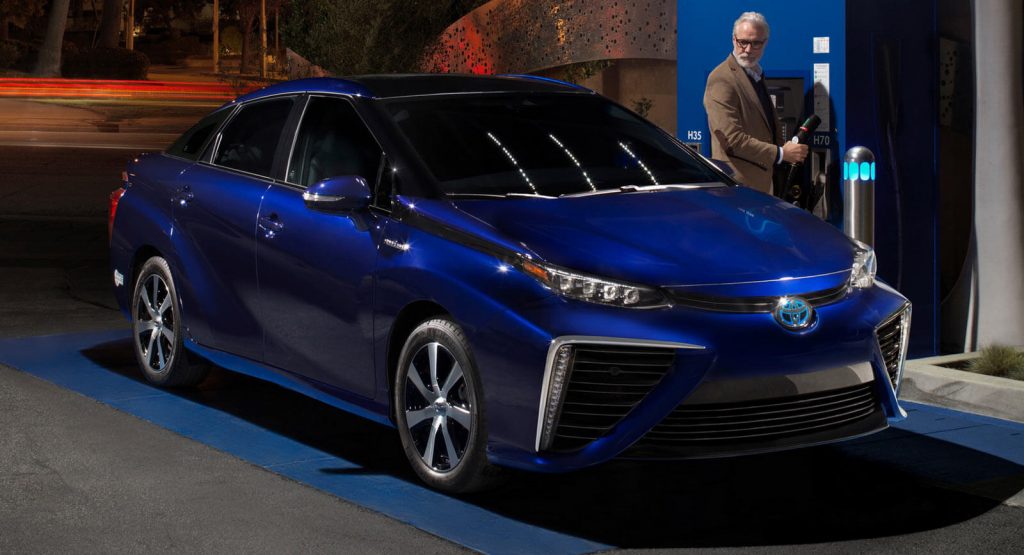After 3,000+ Mirai models were sold in California alone, the nameplate now accounts for more than 80% of all hydrogen fuel cell vehicles sold in the United States.
Unlike cars that employ traditional internal combustion engines or even petrol-electric hybrid tech, the Mirai creates electricity by using hydrogen, oxygen and a fuel cell, a process that emits nothing but water vapor into the atmosphere.
“Toyota remains at the forefront of developing and deploying hydrogen fuel cell technology, and we believe strongly in its potential to help realize a more sustainable and zero-emissions society,” said Toyota exec VP, Bob Carter.
“From our success in launching the Mirai to our work in building the world’s first megawatt-scale carbonate fuel cell power generation plant, Toyota is proud to bring to market new uses for this versatile technology.”
The Mirai features an EPA estimated driving range of 312 miles (502 km) and 67 mpge city/highway/combined. According to Toyota, it takes just 5 minutes to refuel it.
Also, the Japanese automaker is committed to building a hydrogen-friendly society. Currently, 31 retail hydrogen stations are open in California, with an additional 12 stations projected to arrive this year in the Golden State. Meanwhile, Toyota is also building a new Tri-Gen facility at the Port of Long Beach that will use bio-waste gathered from the state’s agricultural industry in order to generate water, electricity and hydrogen – the latter will fuel all Toyota FCEVs moving through the port.
This will include both the Mirai sedan as well as the automaker’s Heavy Duty hydrogen fuel cell class 8 truck, also known as Project Portal.









